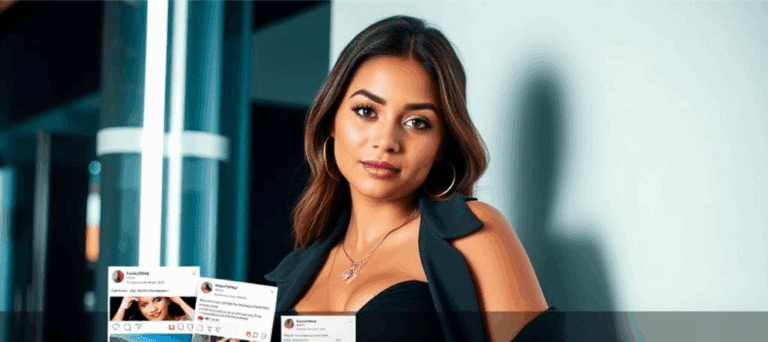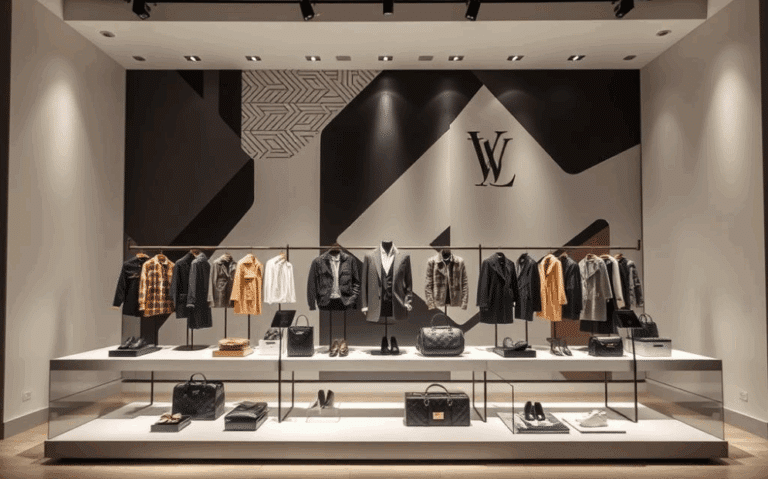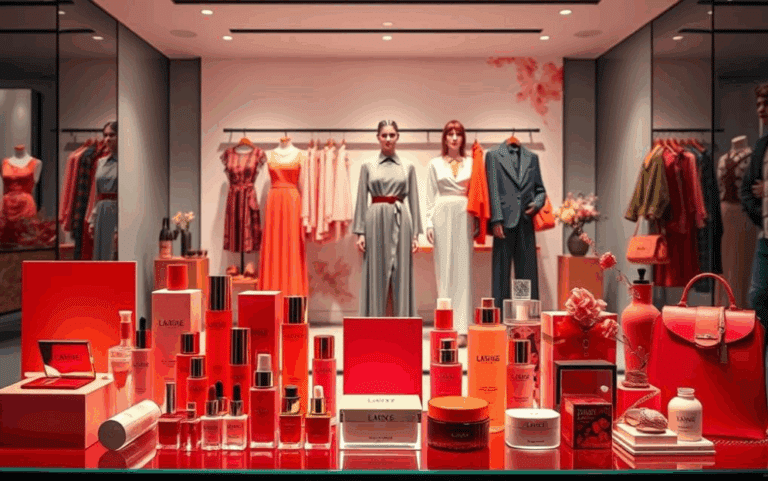Anúncios
Over 10 million active customers worldwide engage with a UK-based fashion retailer that ships trendy apparel to 100+ countries. What started as a small Manchester startup now shapes how brands connect with Gen Z through digital marketing innovations.
This global success story reveals how modern companies leverage creative partnerships. By collaborating with trendsetters, businesses create authentic content that speaks directly to their audience. The strategy works particularly well for fashion-forward demographics aged 16-28 who crave affordable, Instagram-ready styles.
New Zealand marketers and creators can learn valuable lessons from this approach. Strategic alliances help brands maintain relevance in fast-paced digital markets. Free product exchanges often fuel these relationships, benefiting both parties when executed thoughtfully.
The key lies in aligning values like speed and accessibility with partner selection. Successful campaigns mirror what shoppers already love about the brand while introducing fresh perspectives. This balance helps companies stand out in crowded online spaces.
Understanding these dynamics proves crucial for anyone building a presence in today’s visual-driven fashion landscape. The right collaborations can transform how audiences perceive and interact with modern retailers.
Introduction: Setting the Scene for Influencer Collaborations
Modern marketing thrives on human connections. Fashion companies now prioritize real voices over polished ads, creating trust through relatable storytelling. This shift reflects how younger customers discover products – through peers, not billboards.
Context and Objectives
Traditional advertising struggles to cut through digital noise. Brands instead partner with creators who mirror their target audience‘s values. These collaborations blend authenticity with strategic goals, turning everyday content into sales drivers.
Some partnerships offer 7% commissions through networks like Awin, with payments via PayPal or Bitcoin. This structure supports creators while letting brands track campaign success across 30-day windows.
Case Study Relevance to New Zealand Audiences
Global e-commerce tactics adapt surprisingly well locally. Kiwi businesses can learn from international success stories while honoring cultural nuances. The key lies in balancing global trends with homegrown voices.
Young New Zealanders value genuine recommendations more than flashy promotions. By studying overseas influencer marketing models, local companies gain templates for building trust. This approach works across industries – from fashion to tech startups.
Effective strategy isn’t about copying formulas. It’s understanding why certain methods resonate globally, then adapting them through a Māori or Pasifika lens. That’s how partnerships become powerful tools for growth.
The Boohoo Influencer Program In Focus
The fusion of affiliate systems and creative content shapes today’s fashion marketing strategies. This approach combines financial incentives with artistic freedom, creating partnerships that benefit both brands and creators.
Program Overview and Key Features
Participants earn 7% commissions through validated sales, with payments processed via multiple platforms. The structure removes minimum payout requirements, making it accessible to creators at various growth stages. Daily updated product feeds ensure partners always showcase trending items.
Collaboration flexibility stands out as a key advantage. Content creators choose between single-post features or extended ambassadorships. This adaptability helps maintain authenticity – a crucial factor for customer trust in fashion campaigns.
The support system combines brand expertise with network resources. Partners receive pre-approved visuals, performance dashboards, and dedicated assistance. “Our tools help creators focus on storytelling, not logistics,” notes a fashion marketing specialist.
Diverse partnerships drive results. While some brands chase celebrity status, this program values engagement over follower counts. Micro-influencers often deliver higher conversion rates through niche audience connections.
Regular product refreshes keep content relevant in fast-paced markets. This strategy aligns with Gen Z’s demand for novelty, making influencer marketing efforts feel current rather than recycled.
Leveraging Social Media in Fashion and Marketing
Platform algorithms now dictate style trends as much as runway shows. Fashion brands that master social media dynamics create cultural moments while driving measurable results. This shift demands content that blends entertainment with subtle persuasion.

Platform-Specific Opportunities
Instagram remains the go-to for visual storytelling. Creators use carousel posts to demonstrate outfit versatility, while Reels highlight quick styling hacks. One study shows posts with multiple looks receive 37% more engagement than single-image content.
TikTok’s explosive growth reshapes how trends emerge. Successful videos often feature:
| Platform | Key Audience | Top Content Format |
|---|---|---|
| 18-34yo | Styled flat lays | |
| TikTok | 13-24yo | Transition videos |
| 25-44yo | Product tutorials |
Content That Converts
Relatable scenarios outperform polished campaigns. Videos showing affordable pieces styled for job interviews or dates perform well across platforms. Authenticity drives 68% of purchase decisions among Gen Z shoppers.
Diverse representation proves equally vital. Posts featuring various body types and cultural backgrounds see 42% higher share rates. This approach aligns with modern values while expanding audience reach organically.
Unlocking the Benefits: How Free Clothes Collaborations Work
Creative partnerships between fashion brands and content creators offer mutual growth opportunities. These alliances help brands reach new customers while giving creators tools to build credibility. Let’s explore how these exchanges deliver value for both parties.
Advantages for Creators
Style-focused creators gain access to thousands of trendy affordable pieces. This eliminates wardrobe costs while letting them showcase fresh looks weekly. One creator notes: “The daily product updates keep my content feeling current without draining my budget.”
Authentic reviews drive stronger audience trust. Followers appreciate seeing real experience with items before purchasing. This transparency converts better than traditional ads – 72% of shoppers trust peer recommendations over brand messaging.
Audience Appeal and Trend Alignment
Modern shoppers want style guidance that fits their lifestyles. Creators demonstrate how to mix budget pieces for work, dates, or casual outings. This practical approach helps target audiences visualize outfits for their specific needs.
| Collaboration Benefit | Creator Advantage | Audience Value |
|---|---|---|
| Product Access | No-cost wardrobe updates | Discover new styles |
| Content Flexibility | Multiple posting formats | Varied styling ideas |
| Trend Responsiveness | Daily new items | Latest fashion access |
New Zealand audiences particularly value versatility. Posts showing how one dress works for beach days and office meetings perform 29% better locally. This localized approach makes global trends feel achievable for Kiwi shoppers.
Boohoo’s Marketing Strategy: Speed, Trends, and Innovation
Speed defines success in modern retail. Leading brands now treat trend cycles as sprints rather than marathons, turning viral moments into sellable products before competitors react. This approach reshapes how companies engage trend-conscious shoppers worldwide.
Rapid Product Drops and Fast Fashion Dynamics
The brand’s supply chain operates like a social media feed – constantly refreshing. New styles land daily through:
- 48-hour design-to-production cycles
- Strategic UK manufacturing partnerships
- Limited inventory batches testing consumer demand
This system lets marketers capitalize on TikTok trends before they peak. When a celebrity outfit goes viral, adapted versions hit the site within 72 hours. “We’re not just fast – we’re predictive,” notes a fashion analyst.
| Traditional Fashion | Fast Fashion Strategy | Impact |
|---|---|---|
| 6-month cycles | Daily launches | 87% faster trend adoption |
| Bulk production | Micro-batch testing | 63% less unsold stock |
| Seasonal sales | Flash promotions | 41% higher urgency-driven purchases |
Utilizing Real-Time Data and Trends
Every Instagram scroll and site click feeds the strategy. Teams monitor:
- Social media hashtag velocity
- Cart abandonment patterns
- Geo-specific style preferences
This data informs campaigns targeting specific customer segments. When Wellington shoppers show interest in sustainable fabrics, localized email blasts highlight eco-friendly collections. Real-time adjustments keep marketing efforts razor-focused.
The approach proves particularly effective in New Zealand’s fast-paced digital landscape. Kiwi consumers appreciate brands that mirror their preference for quick, convenient solutions without sacrificing style credibility.
Personalization and Automation in E-commerce Growth
Smart algorithms now tailor shopping experiences as effectively as human stylists. Fashion leaders use automation to craft unique journeys for each customer while scaling e-commerce growth. This tech-driven approach helps brands stay competitive in New Zealand’s fast-paced digital markets.
Streamlining Campaign Management
Advanced tools analyze browsing patterns to predict style preferences. One marketer explains: “Our systems track 14 data points per shopper – from cart abandonment rates to color preferences. This lets us serve hyper-relevant product suggestions.”
Campaign management platforms handle repetitive tasks like:
- Scheduling social posts across time zones
- Tracking affiliate performance metrics
- Generating personalized email sequences
| Traditional Approach | Automated System | Efficiency Gain |
|---|---|---|
| Manual content scheduling | AI-powered calendars | 73% faster deployment |
| Generic promotions | Behavior-triggered offers | 41% higher conversions |
| Spreadsheet tracking | Real-time dashboards | 89% accuracy improvement |
Kiwi shoppers particularly respond to localized touches. Systems detect Wellington vs Auckland weather patterns to recommend appropriate outfits. This data-driven method helps customers find perfect styles while boosting brand loyalty.
The growth potential becomes clear when combining automation with human creativity. Marketers focus on strategic partnerships while machines handle repetitive tasks. This balance keeps campaigns fresh yet efficient – crucial for sustaining momentum in fashion’s rapid cycles.
Building Long-Term Influencer Partnerships
Sustainable success in digital fashion hinges on meaningful connections rather than transactional exchanges. Brands that nurture long-term relationships with creators see 3x higher customer retention compared to single campaigns. This approach transforms temporary promotions into enduring brand advocacy.
Strategies for Authentic Engagement
Trust grows when collaborations extend beyond product drops. Successful brands co-create content calendars with creators, aligning seasonal themes with audience interests. Monthly brainstorming sessions and shared performance data keep partnerships strategic yet flexible.
Consistent engagement matters most. Surprise style boxes or early access to collections make creators feel valued beyond their follower count. One New Zealand-based stylist notes: “When relationships deepen, my audience senses genuine enthusiasm in every post.”
These long-term partnerships thrive on mutual growth. Brands gain authentic storytelling, while creators build authority through recurring collaborations. The result? Influencer content that feels less like ads and more like trusted friend recommendations – a powerful strategy in today’s skeptical digital landscape.
FAQ
How do fast fashion brands like Boohoo leverage social media for growth?
Brands use platforms like Instagram and TikTok to share trendy, affordable styles. They partner with creators to showcase products through engaging content, aligning with real-time trends to drive sales and visibility.
What strategies help influencers build authentic relationships with audiences?
Creators focus on relatable storytelling, consistent engagement, and showcasing how clothing fits into daily life. Highlighting personal style while staying true to brand aesthetics fosters trust and loyalty.
Why are rapid product drops central to modern e-commerce strategies?
Frequent releases keep offerings fresh and capitalize on emerging trends. This approach encourages repeat site visits, urgency-driven purchases, and aligns with consumer demand for “of-the-moment” styles.
How does personalized marketing enhance customer experience in fashion?
Tailored recommendations, targeted emails, and data-driven campaigns make shoppers feel understood. Automation tools help brands deliver relevant content without sacrificing speed or scalability.
What role do long-term partnerships play in influencer marketing?
Sustained collaborations build credibility, as audiences recognize genuine brand affinity. They also streamline content creation, ensuring cohesive messaging while adapting to seasonal or trend shifts.
How can creators align their content with a brand’s target audience?
Analyzing demographics, preferences, and engagement patterns helps tailor posts. Blending the brand’s aesthetic with authentic, lifestyle-focused storytelling ensures resonance without feeling overly promotional.
Why is real-time data critical for successful fashion campaigns?
Instant insights into trending styles, customer behavior, and campaign performance allow quick adjustments. This agility helps brands stay relevant and maximize ROI in a fast-paced market.
What makes clothing brands prioritize trendy, affordable styles?
Balancing current trends with accessible pricing attracts budget-conscious shoppers seeking fresh looks. It drives repeat purchases and positions the brand as a go-to for wardrobe updates.




